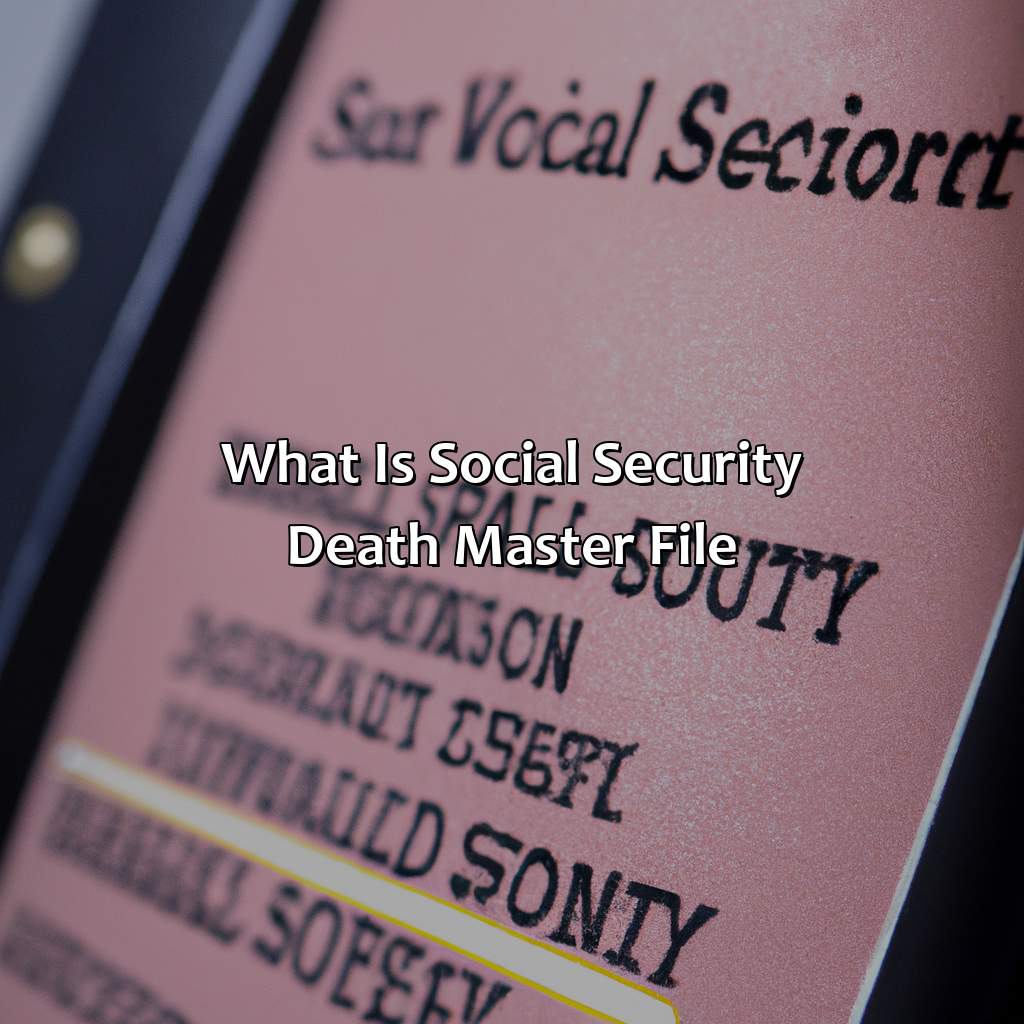What Is Social Security Death Master File?
Key Takeaway:
- Social Security Death Master File (SSDMF) is a database maintained by the Social Security Administration that contains records of deceased individuals who had a Social Security number.
- SSDMF is generated through the weekly match of Social Security numbers with death records from various sources, including state departments of health and vital statistics, funeral homes, and family members.
- SSDMF can be used for various purposes, such as verifying death, settling estates, and detecting fraud. However, access to SSDMF is restricted to approved users and organizations, and its misuse can lead to privacy concerns and controversies.
Have you ever wondered how to track someone who has passed away? The Social Security Death Master File (DMF) provides that information, helping you find the answers you need. You can now access death records quickly and easily.
What is SSDMF?
What is SSDMF? To get the answer, you must learn its background and history. Why was it created? How has it changed? You must also grasp how SSDMF is made. This knowledge will give you a full understanding of SSDMF and why it matters.
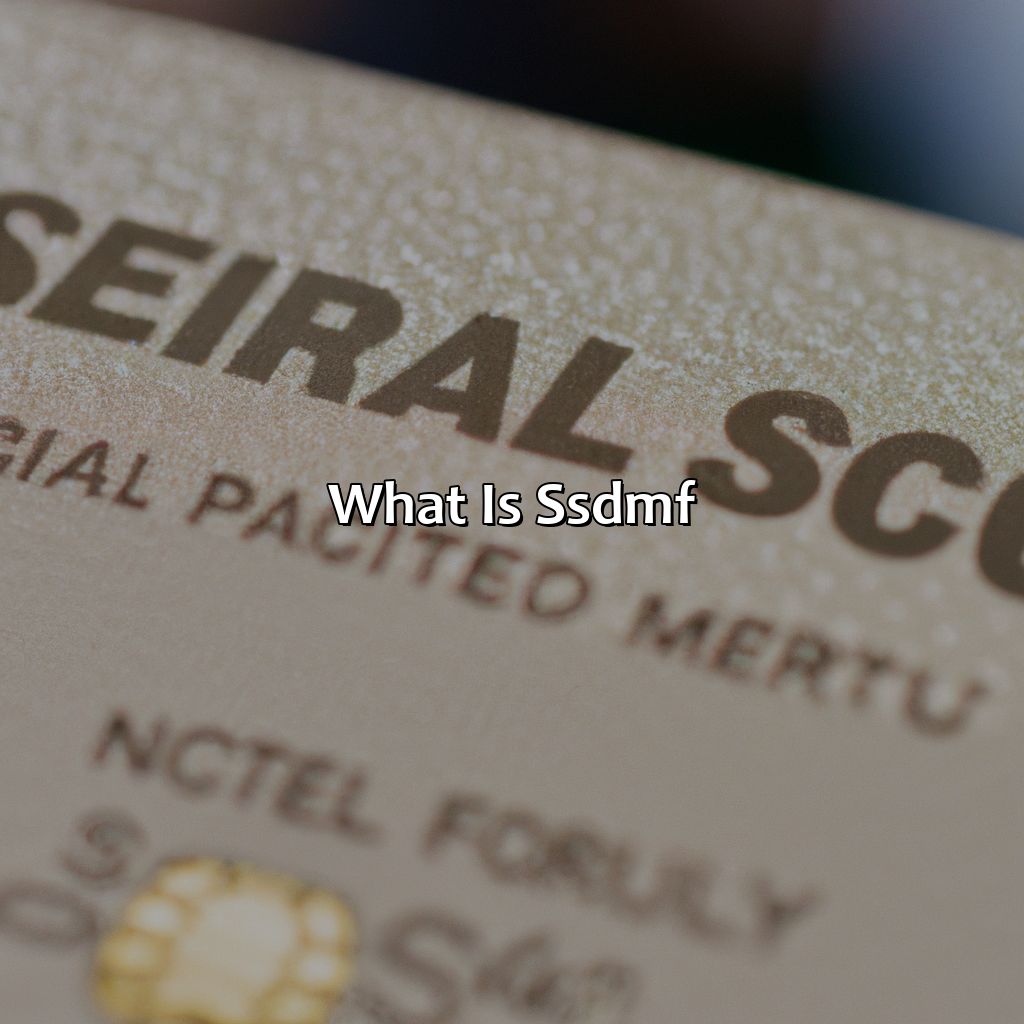
Image credits: retiregenz.com by David Woodhock
Background and History of SSDMF
The Social Security Death Master File (SSDMF) is a compilation of information about individuals with Social Security numbers who have died. Established in the 1960s, SSDMF was designed to aid government agencies, financial institutions and other organizations in verifying identity and preventing fraud. It contains millions of records dating back to the early 20th century and is regularly updated by the Social Security Administration.
One unique detail about SSDMF is that it has been a critical tool in detecting and preventing fraudulent activity related to identity theft. Many businesses use the file to verify the identity of clients, while law enforcement agencies use it to track down fugitives and solve crimes. SSDMF is an essential public resource that facilitates access to crucial information on deceased individuals.
According to the US Department of Commerce, more than 98% of American adults have an SSN, making it a key identifier for business purposes as well as government programs such as social security benefits. Thus SSDMF forms a critical part of any organization’s overall strategy for managing personal data.
Fun fact: The first iteration of SSDMF was printed on magnetic tape reels and stored offline in secure facilities for processing by large computers rather than being online like today’s databases.
Why wait for death to know if you’re dead? The SSDMF has got you covered.
How is SSDMF generated?
The Social Security Death Master File (SSDMF) is generated through a complex process that involves multiple data sources. Once a person dies, the information is sent to the Social Security Administration (SSA) and cross-checked against their database to verify the deceased’s identity. This information is then combined with death records from other sources and compiled into the SSDMF.
To ensure its accuracy, the SSA updates the SSDMF weekly by adding new deaths and removing erroneous entries. This helps prevent fraud and identify theft by making it more difficult for criminals to use a deceased person’s information.
It’s important for financial institutions, government agencies, and healthcare providers to regularly check the SSDMF to ensure they are not providing benefits or services to someone who has passed away. Doing so can help prevent fraudulent activity and ensure resources are used appropriately.
Don’t risk missing out on crucial information about your loved ones or financial affairs. Regularly checking the SSDMF can provide peace of mind and protect you from potential fraud and scams.
Accessing SSDMF is like finding a needle in a haystack, except the needle is someone’s death record and the haystack is the government’s database.
Who can access SSDMF?
Who can access SSDMF? Only Approved Users and Organizations. Misuse of SSDMF comes with severe penalties. This section will explore the limits and restrictions. Plus, the consequences of misusing the database.
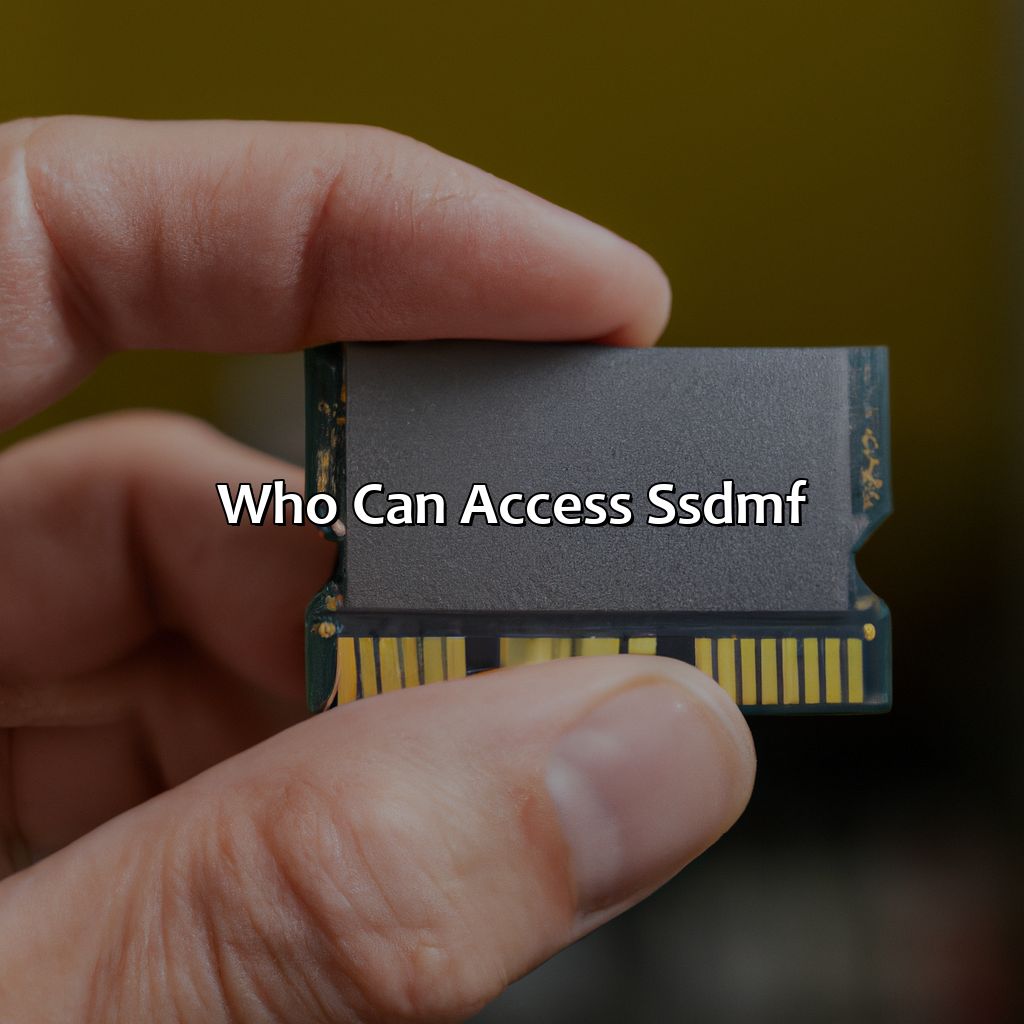
Image credits: retiregenz.com by Joel Arnold
Approved Users and Organizations
Social Security Death Master File (SSDMF) has a specific accessibility for selected users and organizations. Only those who are approved by the National Technical Information Service (NTIS) can access the database containing personal identifiable information of deceased individuals.
| Approved Users | Approved Organizations |
|---|---|
| Banks and financial institutions | Federal, state and local government agencies with official purposes |
| Insurance and healthcare companies | Social Security Administration for maintaining records |
| Genealogy researchers | Fiduciaries or executors with legal rights to claim properties of the deceased individual. |
It is to be noted that unauthorized access or misuse of SSDMF can result in heavy monetary fines and penalties. Instead of publishing directly, NTIS now distributes SSDMF under strict security rules, as mandated by provisions in Section 203 of Public Law 112-56 regarding the protection against identity theft.
Under the economic stimulus package enacted during the Covid pandemic, full public disclosure of SSDMF was suspended until December 2021.
A recent article by Forbes mentions that identity thieves continue to use SSDMF for illegal purposes even after restrictions have been implemented.
“Fraudsters Still Using Social Security Death Index To Steal Identities And File Tax Returns” – Forbes
Using SSDMF is like playing with fire, except the fire is a database full of deceased people’s personal information.
Restrictions on the Use of SSDMF
Accessing SSDMF is restricted to certain individuals and entities, including financial institutions for fraud prevention purposes. Individuals can only request a record for themselves or a deceased family member. Moreover, access to the file is limited to registered subscribers who comply with strict regulations and undergo periodic audits.
Furthermore, there are further limitations on redisclosure of information from the SSDMF. Subscribers must have a legitimate reason for using the data and cannot share it with unauthorized parties without express written consent from the Social Security Administration (SSA).
It’s worth noting that prior to 2013, SSDMF was unrestricted and widely available. However, recent legislation has placed significant restrictions on its use due to concerns over privacy and identity theft.
According to a report by the Office of the Inspector General (OIG), improper disclosure of death information from SSDMF contributed to over $1 billion in fraudulent activity related to identity theft between 2006 and 2011.
Using SSDMF is like having a crystal ball that only shows who’s no longer with us.
How can SSDMF be used?
SSDMF is great for verifying death, settling estates and detecting fraud. Grasping the multiple uses of SSDMF provides an even greater appreciation of its importance. Utilize this file and gain a fuller understanding of its value!
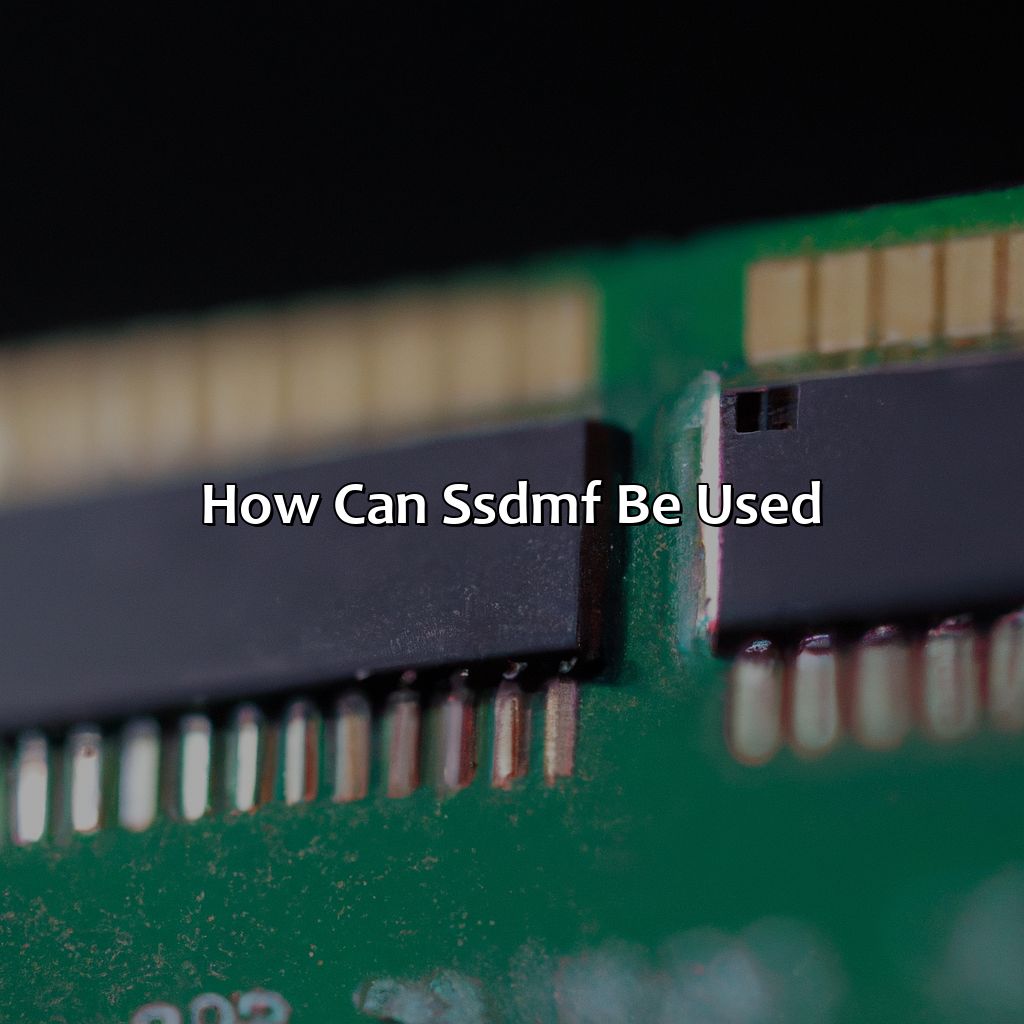
Image credits: retiregenz.com by James Woodhock
Verification of Death
Verifying the Deceased: What Can the SSDMF Do?
The Social Security Death Master File (SSDMF) is a database that contains the Social Security numbers, names, and dates of birth/death of individuals who have passed away. The SSDMF is used primarily for verification of death, as it is updated regularly by various sources such as state vital records, funeral homes, and banks.
The SSDMF can be used by government agencies and organizations to confirm an individual’s death for various purposes such as claiming life insurance policies or pension benefits. It can also be used to prevent identity theft and fraud, as it provides information on deceased individuals whose identities may have been stolen.
In addition to verification of death, the SSDMF can also be utilized for genealogical research and historical purposes. Researchers can access the database to trace family histories or find missing branches in family trees.
Don’t risk missing out on important benefits or protecting yourself from identity theft. Take advantage of the resources available with the SSDMF for peace of mind and security. Why be haunted by the dead when you can settle their estate with the help of SSDMF?
Estate Settlement
When it comes to settling an individual’s estate, the SSDMF can prove to be a valuable resource. This database contains information on deceased individuals and can help executors locate assets, notify creditors and heirs, and distribute remaining funds in accordance with the law.
Using the SSDMF, executors can confirm the date of death, verify social security numbers, and determine if the individual received any benefits. They can also use this information to track down any financial accounts that were not included in the will or other documents. Executors may also use this database to locate heirs who may be entitled to a share of the inheritance.
It is important to note that not all estates will require the use of the SSDMF. If an individual’s estate consists only of personal possessions, real estate with no liens or mortgages, and bank accounts with named beneficiaries, then it may not be necessary to consult this database.
However, in cases where an executor is unsure about what assets might exist or how to distribute them fairly, consulting the SSDMF should be considered. In some cases, failing to take these steps could result in legal disputes among heirs or beneficiaries.
A real-life example of how beneficial SSDMF can be involves a wealthy businessman who passed away without a clear will or trust in place. His family was unaware of his numerous offshore bank accounts until they consulted the SSDMF for assistance. With help from professionals experienced in managing high net worth estates such as his own, they were able to locate these hidden funds and distribute his assets appropriately among loved ones.
Fraudsters beware, SSDMF is the ultimate lie detector test for those trying to cash in on a deceased loved one’s social security benefits.
Fraud Detection
The utilization of the Social Security Death Master File (SSDMF) for fraud identification is a crucial application. The SSDMF helps track any fraudulent activities related to deceased individuals and assists in preventing identity theft. It is an effective tool for detecting and preventing fraud in various domains, including finance, healthcare, and government.
The SSDMF can be used for spotting fraudulent claims on life insurance policies. It not only verifies if the deceased had such policies but also ensures that no fraudulent claim has been raised under their name. Additionally, it can be useful in identifying individuals who are trying to defraud the social security system by claiming benefits through successfully impersonating deceased people.
Interestingly, the SSDMF provides information about deceased people that dates back to 1936. It thus allows investigators to trace fraud schemes and gain a historical perspective on deceitful operations involving personal identities.
An infamous case of fraud detection involved Andrei Romanovich Chikatilo, a notorious Soviet serial killer who had assumed several false identities over years of criminal activity. When he was finally arrested, law enforcement officials discovered that he had used details from one of his victims’ death certificates to create a new identity. This identity helped him escape police attention while continuing his gruesome spree. The successful employment of SSDMF played a crucial role in identifying Chikatilo’s victim and ultimately led to his conviction as a result.
Controversies surrounding SSDMF: It’s like the ultimate unlucky list, but instead of being picked last for dodgeball, you just get declared dead by mistake.
Controversies surrounding SSDMF
To get a grasp on the debates about SSDMF, you have to probe the issues of improper utilization of SSDMF info and privacy qualms. Improper use of SSDMF details is a steadily increasing worry. This has been seen in the news lately. Additionally, privacy issues with SSDMF have been a topic of discussion, leading to demands for more openness and stricter rules on accessing the data.
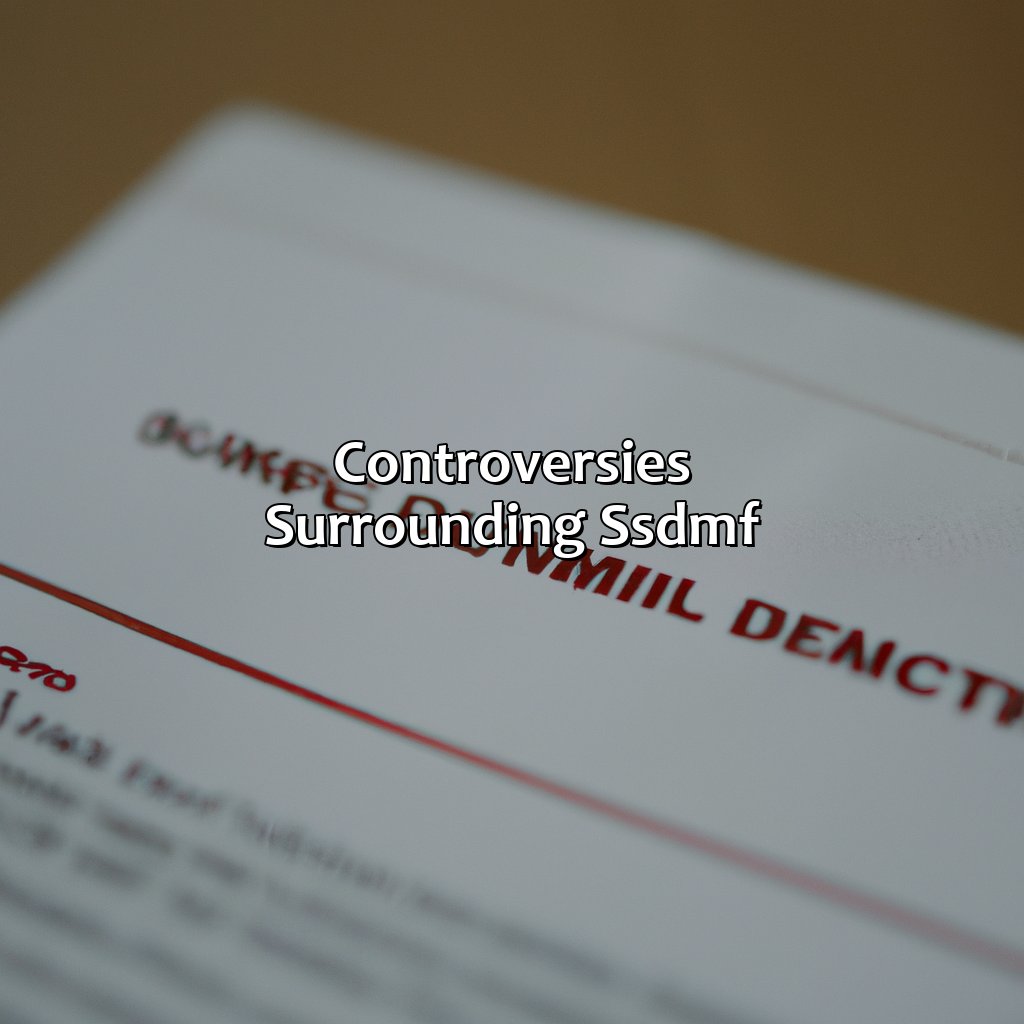
Image credits: retiregenz.com by Yuval Jones
Misuse of SSDMF Data
The reckless exploitation of Social Security Death Master File (SSDMF) data has raised several controversies. Researchers, telemarketers, fraudsters and identity thieves have been accused of using this database for malicious purposes.
SSDMF data has been misused for several purposes including illegal credit card purchases, tax frauds, obtaining loans using dead people’s identities and purchasing guns via fake ID cards. The widespread misuse of SSDMF data has highlighted the need for a regulatory body that could safeguard such sensitive information from being used for unlawful activities.
It is important to note that not all applications of SSDMF data are unscrupulous. This information can be used to track down family trees or conduct research on the population structure. Despite its legitimate uses, there still exist concerns regarding the security and privacy risks associated with SSDMF data.
As per history, Congress passed the bipartisan Budget Act in 2013 after it emerged that scammers had filed fraudulent tax returns utilizing SSDMF information to claim illegal refunds. This act placed restrictions on access to SSDMF data while also imposing stiff fines on those who were found to be misusing such sensitive information.
Privacy concerns surrounding SSDMF are real, but let’s be honest, if you’re dead, are you really that worried about your personal information being leaked?
Privacy Concerns
The Social Security Death Master File (SSDMF) has sparked discussions about personal data protection. The SSDMF is a database of individuals who have died and their social security numbers. The privacy debate attached to SSDMF revolves around its public accessibility and the accuracy of the information contained in it.
Access to SSDMF is available to several users, including genealogists, financial institutions, and credit reporting agencies. However, people worry that this public availability could expose deceased individuals’ identities to identity theft or other malicious intents.
Concerns are also raised about incorrect or outdated information on the SSDMF. With common name patterns making it hard to distinguish between individuals easily, there have been instances of errors in death listings for living persons.
Many laws passed over time now regulate access to Critical Personal Information like SSDMF’s limiting its use for identity authentication purposes only. Changes in laws after high-profile data breaches lead to revisions with stricter access controls and limits on demonstrations considered public displays.
Privacy concerns surrounding SSDMF trace back over a decade; two identity thieves pleaded guilty in 2013 for taking advantage of files from the sad master file before its limited release of data drivers who bought the pirates’ services; they used stolen identities till their arrest—the case driving movements by US lawmakers to increase limits accordingly.
Five Facts About Social Security Death Master File:
- ✅ The Social Security Death Master File (SSDMF) is a publicly available database that contains over 89 million records of deceased individuals in the United States. (Source: Social Security Administration)
- ✅ The SSDMF is used by financial institutions, government agencies, and genealogists to verify death records and prevent identity theft fraud. (Source: NPR)
- ✅ In 2013, a law was passed that restricted the release of the SSDMF for three years after an individual’s death, in an effort to prevent identity theft. (Source: NBC News)
- ✅ The SSDMF includes basic information such as the individual’s name, date of birth and death, and Social Security number. (Source: Family Tree Magazine)
- ✅ The SSDMF has been a subject of controversy as some privacy advocates argue that the public availability of this information can put surviving family members at risk for identity theft. (Source: The Washington Post)
FAQs about What Is Social Security Death Master File?
What is Social Security Death Master File?
Social Security Death Master File or SSDMF is a publicly available database that contains information about people who have died and were eligible for Social Security benefits. It includes their name, birthdate, death date, and Social Security number.
How is the Social Security Death Master File used?
The Social Security Death Master File is used for a variety of purposes, such as verifying death records, preventing identity theft, and fraud detection. It is also used by institutions like financial companies, credit bureaus, and law enforcement agencies.
Who can access the Social Security Death Master File?
Access to the Social Security Death Master File is restricted to certain entities that are eligible under the Freedom of Information Act. This includes federal, state, and local government agencies, and certain businesses that have a legitimate need for the information.
Is there a fee to access the Social Security Death Master File?
Yes, there is a fee to access the Social Security Death Master File. The fee varies depending on the type and amount of data requested. The fees are usually charged to cover the cost of processing and providing the information.
Can individuals request their own information from the Social Security Death Master File?
Yes, individuals can request their own information from the Social Security Death Master File. They can do this by submitting a request to the Social Security Administration’s Office of Privacy and Disclosure. The request should include the individual’s full name, birthdate, and Social Security number.
Can errors in the Social Security Death Master File be corrected?
Yes, errors in the Social Security Death Master File can be corrected. Individuals or their authorized representative can request correction of any errors by contacting the Social Security Administration directly.
